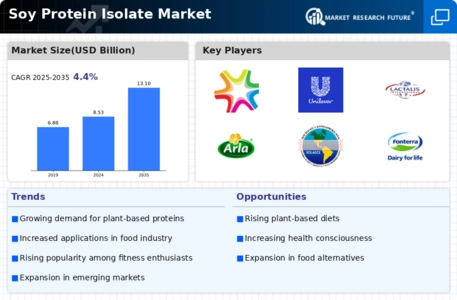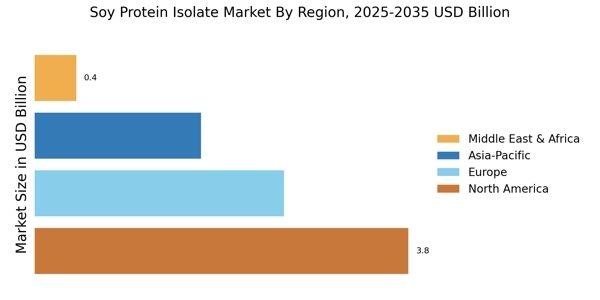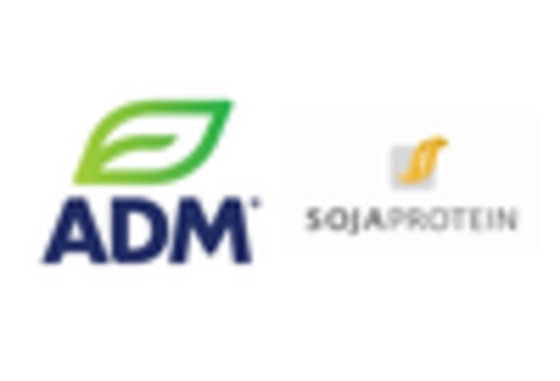Health Consciousness Among Consumers
The increasing awareness of health and wellness among consumers appears to be a primary driver for the Soy Protein Isolate Market. As individuals seek healthier dietary options, the demand for plant-based proteins, including soy protein isolate, has surged. This trend is reflected in market data, indicating that the plant-based protein segment is projected to grow at a compound annual growth rate of approximately 8% over the next five years. Consumers are increasingly opting for soy protein isolate due to its high protein content and favorable amino acid profile, which aligns with their health goals. Furthermore, the rise in vegetarian and vegan diets has contributed to the growing acceptance of soy protein isolate as a viable protein source. This shift in consumer preferences is likely to continue influencing the Soy Protein Isolate Market positively.
Rising Popularity of Meat Alternatives
The growing trend towards meat alternatives is significantly impacting the Soy Protein Isolate Market. As consumers become more conscious of their dietary choices, the demand for plant-based meat substitutes has surged. Soy protein isolate serves as a key ingredient in many of these products due to its ability to mimic the texture and flavor of meat. Market data reveals that the meat alternatives segment is projected to experience substantial growth, with a notable increase in the number of products featuring soy protein isolate. This shift in consumer preferences towards plant-based diets is likely to continue, further propelling the Soy Protein Isolate Market as manufacturers innovate to create appealing meat alternatives.
Sustainability and Environmental Concerns
Sustainability has emerged as a crucial factor influencing consumer choices, particularly in the Soy Protein Isolate Market. As environmental concerns escalate, consumers are gravitating towards plant-based proteins, which are perceived as more sustainable compared to animal-based alternatives. Soy protein isolate, derived from soybeans, requires fewer natural resources and generates lower greenhouse gas emissions during production. Market data suggests that the demand for sustainable food sources is expected to rise, with a significant portion of consumers willing to pay a premium for environmentally friendly products. This trend indicates a potential shift in purchasing behavior, as consumers prioritize sustainability in their dietary choices. Consequently, the Soy Protein Isolate Market is likely to benefit from this growing emphasis on eco-friendly protein sources.
Technological Advancements in Food Processing
Innovations in food processing technology are playing a pivotal role in shaping the Soy Protein Isolate Market. Advances in extraction and purification methods have enhanced the quality and functionality of soy protein isolate, making it more appealing to food manufacturers. For instance, improved processing techniques have led to the development of soy protein isolates with better solubility and emulsification properties, which are essential for various food applications. Market data indicates that the food and beverage sector is increasingly incorporating soy protein isolate into products such as protein bars, dairy alternatives, and meat substitutes. This trend is expected to drive the growth of the Soy Protein Isolate Market, as manufacturers seek to meet consumer demand for high-quality, functional ingredients.
Increased Investment in Research and Development
Investment in research and development is a critical driver for the Soy Protein Isolate Market. Companies are increasingly allocating resources to explore new applications and improve the nutritional profile of soy protein isolate. This focus on R&D is leading to the discovery of novel uses for soy protein isolate in various sectors, including sports nutrition and functional foods. Market data suggests that the functional food segment is expanding rapidly, with consumers seeking products that offer health benefits beyond basic nutrition. As a result, the Soy Protein Isolate Market is likely to witness growth driven by innovative product development and enhanced consumer awareness of the benefits associated with soy protein isolate.


















Leave a Comment